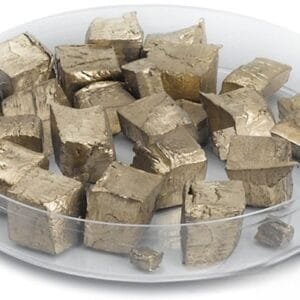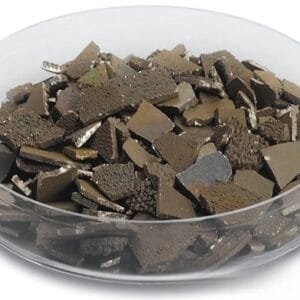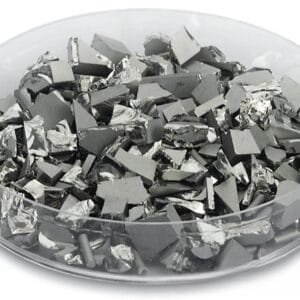| Material Type | Copper Sulfide |
| Symbol | Cu2S |
| Color/Appearance | Dark gray to black |
| Melting Point (°C) | 1,100 |
| Theoretical Density (g/cc) | 5.6 |
| Z Ratio | – |
| E-Beam | – |
| Thermal Evaporation Techniques | Boat: – Crucible: – |
| E-Beam Crucible Liner Material | – |
| Temp. (°C) for Given Vap. Press. (Torr) | – |
| Comments | – |
Copper(I) Sulfide Evaporation Material
TFM offers high-purity Copper(I) Sulfide (Cu₂S) Evaporation Material, widely utilized in thin-film deposition, optoelectronics, and photovoltaic applications. Known for its excellent electrical and optical properties, Cu₂S is an essential material in the development of semiconductor devices, infrared detectors, and energy conversion technologies.
Key Features and Advantages
High Purity (99.99% – 99.999%) – Ensures superior performance in thin-film coatings and advanced electronics.
Excellent Conductivity & Stability – Provides reliable electrical and optical properties for semiconductor applications.
Optimized for Thin-Film Deposition – Suitable for thermal evaporation and electron beam (E-beam) evaporation techniques.
Versatile Availability – Offered in pellets, pieces, and powder to meet diverse industrial and research needs.
Room Temperature Stability – Maintains structural integrity for long-term usability and storage.
Applications
Thin-Film Solar Cells – Used in photovoltaic applications to enhance energy conversion efficiency.
Infrared Detectors & Sensors – Key material in thermal imaging, night vision, and spectroscopic technologies.
Semiconductor Coatings – Ideal for conductive layers, thin-film transistors, and optoelectronic components.
Thermoelectric Devices – Plays a role in energy harvesting and temperature control systems.
Advanced Research & Development – Supports innovative studies in material science and nanotechnology.
Industry Impact
TFM’s Copper(I) Sulfide Evaporation Material provides a high-purity, stable, and efficient solution for semiconductor manufacturing, renewable energy, and optoelectronic innovations. Designed for precise thin-film deposition, Cu₂S from TFM ensures reliable performance and high-quality results in cutting-edge electronic and energy applications.


 MSDS File
MSDS File



Reviews
There are no reviews yet.